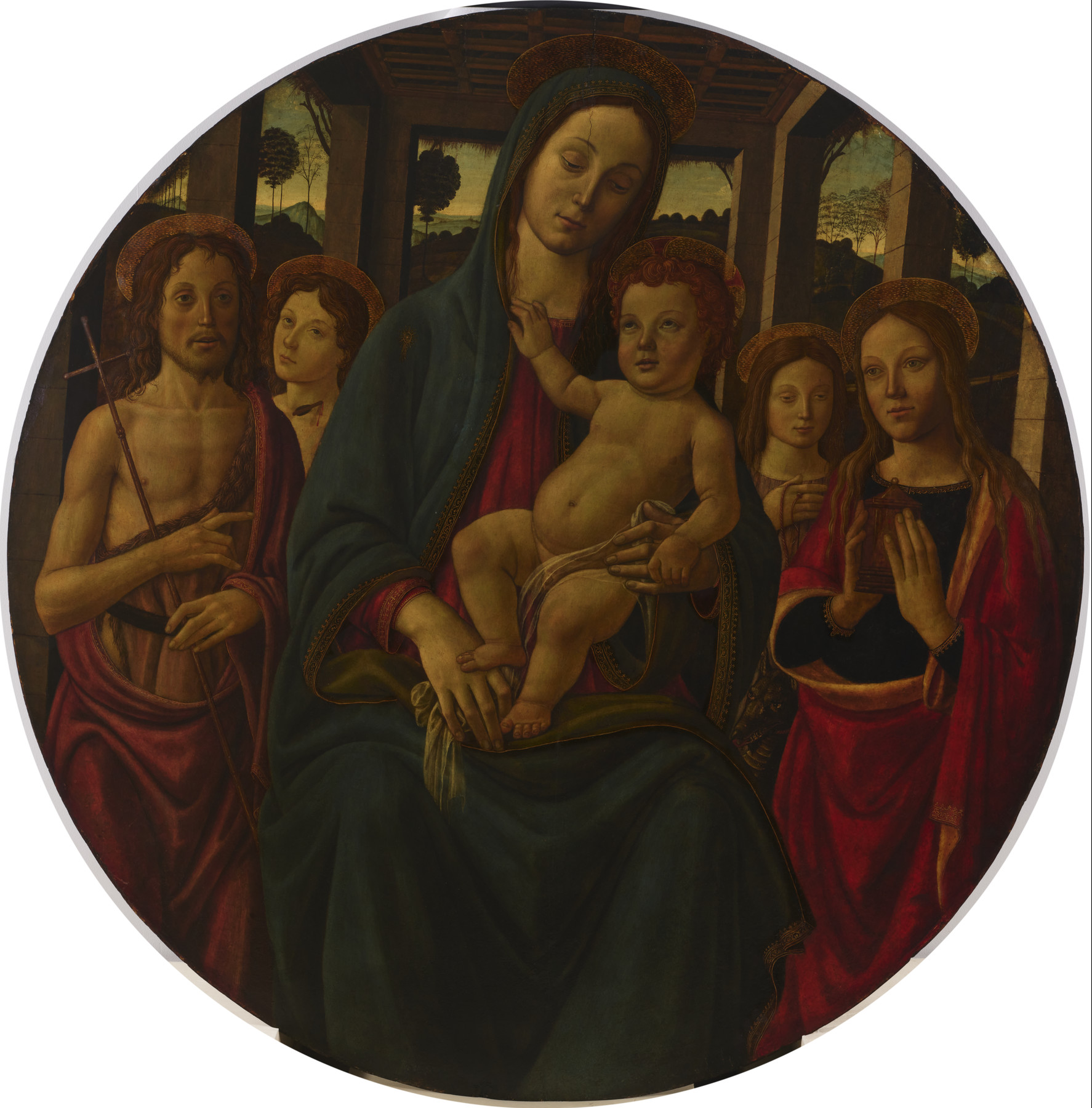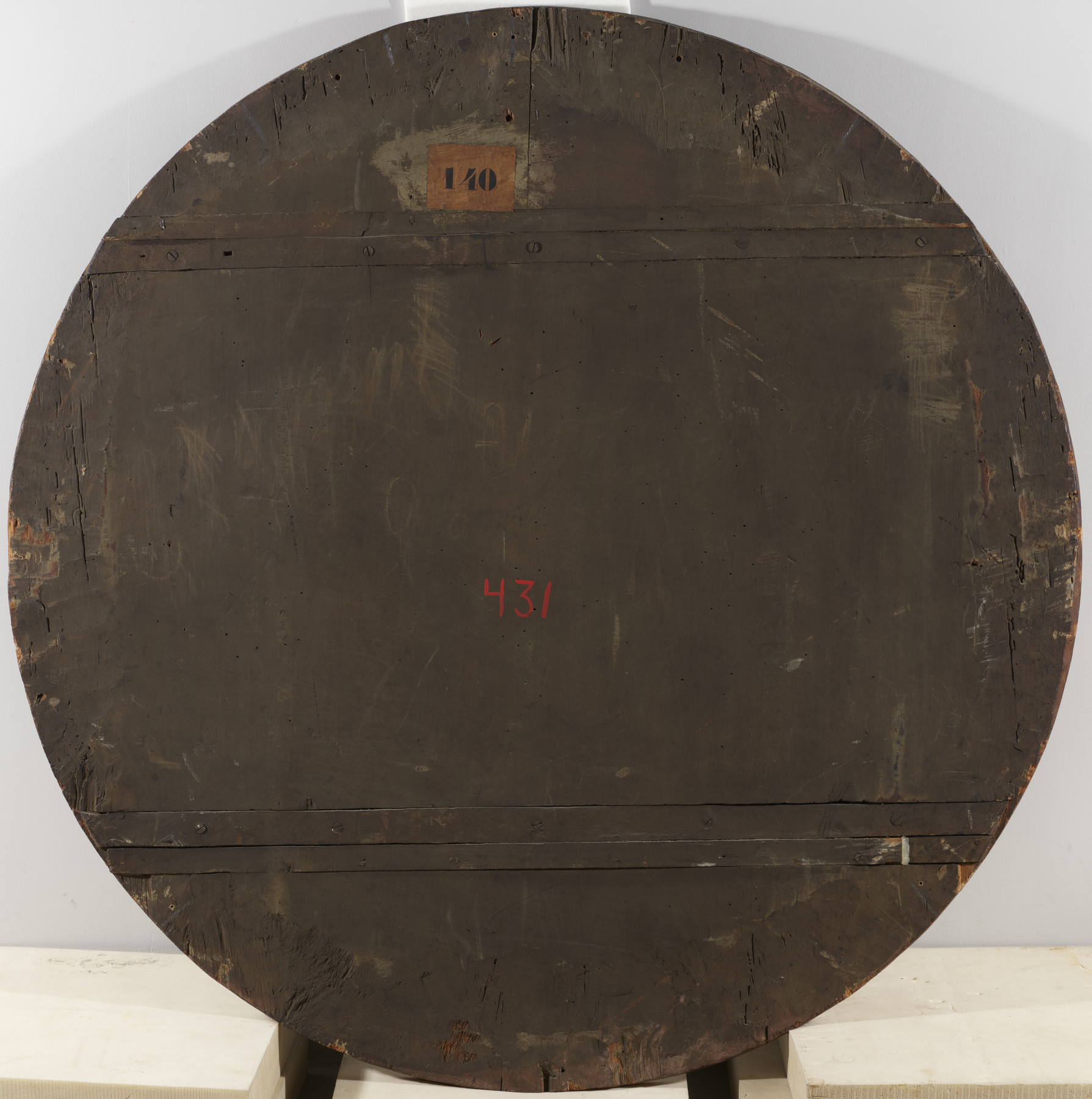Madonna and Child with Four Saints
(Renaissance Europe )
This “tondo” (circular painting) depicts the Madonna and Child flanked by four saints. The saints are (from left to right) John the Baptist, patron saint of Florence, with his customary reed cross and animal-skin shirt; Sebastian, with an arrow in his neck, a reference to his martyrdom; Margaret, with a rosary and the dragon she is said to have subdued; and Mary Magdalen, with the jar of ointment she is said to have used to anoint Christ’s body after the crucifixion.
Tondi were frequently commissioned in Renaissance Florence as votive images, that is to give thanks to God for something, such as the birth of a child. As such, they were generally for domestic spaces. Probably painted in the mid-1480s, this tondo is unusual in that it is exceptionally large and depicts the Madonna and Child flanked by several saints, a scheme more often associated with altarpieces. It may therefore be one of the few examples that hung in a public space instead of a domestic interior. The refined colors and delicate gold embellishments—especially notable in the figures’ hair—suggest that whatever its original destination it was an important and expensive commission.
The Master of the Fiesole Epiphany is the name given by art historians to the anonymous, late fifteenth-century Florentine artist who painted the large altarpiece of the "Epiphany" now in the church of San Francesco in Fiesole, a town in the hills above Florence.
Provenance
Provenance (from the French provenir, 'to come from/forth') is the chronology of the ownership, custody, or location of a historical object. Learn more about provenance at the Walters.
Don Marcello Massarenti Collection, Rome [date and mode of acquisition unknown]; Henry Walters, Baltimore, 1902, by purchase; Walters Art Museum, 1931, by bequest.
Conservation
| Date | Description | Narrative |
|---|---|---|
| Examination | examined for condition | |
| 7/26/1938 | Treatment | reconstructed |
Geographies
Italy, Florence (Place of Origin)
Measurements
Painted surface H: 46 7/16 x W: 45 11/16 x D: 1 1/4 in. (118 x 116 x 3.2 cm)
Credit Line
Acquired by Henry Walters with the Massarenti Collection, 1902
Location in Museum
Not on view
Accession Number
In libraries, galleries, museums, and archives, an accession number is a unique identifier assigned to each object in the collection.
In libraries, galleries, museums, and archives, an accession number is a unique identifier assigned to each object in the collection.
37.431






